[Asters: The Genera Canadanthus, Eucephalus, Eurybia, Oreostemma and Symphyotrichum Found East of the Cascade Mountains of Oregon and Washington]
Douglas' Aster, Douglas's Aster, Spike-like Aster
Symphyotrichum subspicatum
Synonyms: Aster bulteri, Aster douglasii, Aster maccallae, Aster subspicatus, Aster subspicatus var. grayi, Aster subspicatus var. subspicatus, Symphyotrichum subspicatum var. grayi, Symphyotrichum subspicatum var. subspicatum
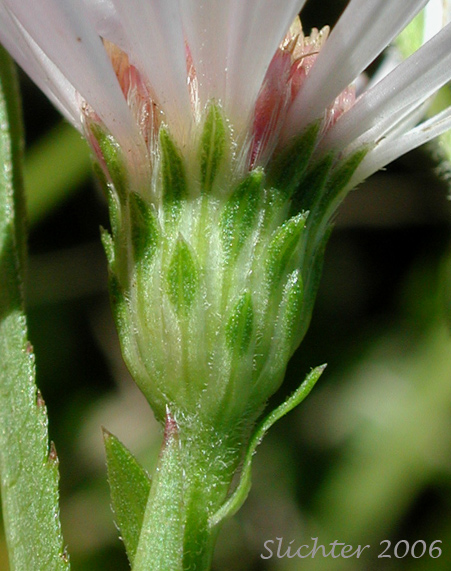
Douglas' aster from Dalton Point, Columbia River Gorge.........October 12, 2006. Note that the outer edges of the bracts (at least at their bases) are whitish, a good characteristic to help ID this species.
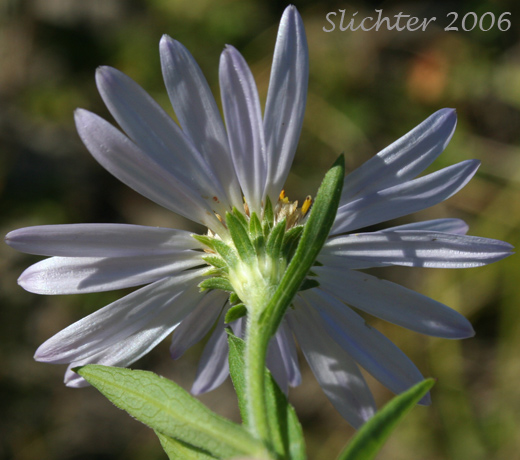 The photo at right is a close-up of the involucre of Douglas' aster from Dalton Point, Columbia River Gorge.........October 12, 2006. Note that the bracts are somewhat leafy.
The photo at right is a close-up of the involucre of Douglas' aster from Dalton Point, Columbia River Gorge.........October 12, 2006. Note that the bracts are somewhat leafy.
Characteristics:
Douglas' aster is a rhizomatous perennial wildflower with erect, usually unbranched
stems to 130 cm high. It is highly variable in appearance and may resemble both
leafy aster and Eaton's aster. The lower leaves are oblanceolate, tapering to
a winged petiole. The leaves of mid-stem are lance-shaped and range from 7-13
cm long and 1-2 cm wide. The blades are smooth and hairless with toothed margins
above mid-blade.
The inflorescence is a cymose panicle with several to many flower heads which
are each 2-4 cm wide. The 20-30 rays are violet and about 1 cm long and surround
the yellow to reddish-purple disk flowers. The involucre is about 5-6 mm long
with linear bracts, the outer bracts sometimes leaf-like at the tip. The bracts
loosely overlap and may be pressed down or spreading and green at the tip with
yellow to brown bases and hairy margins. Visible with a hand lens, each bract
has a thin transparent margin.
Habitat:
Douglas' aster is a wildflower of streambanks and other moist places from
low elevations near the seacoast to moderate elevations in mountain woodlands.
Range:
Douglas' aster is found from coastal Alaska south to coastal California
and east to Alberta, Montana, northern Idaho and northeastern Oregon. It is
most common west of the Cascade Mts.

Upper leaf surface of Douglas' aster from Dalton Point, Columbia
River Gorge..........September 9, 2001. Note the short hairs along the
margin of the leaf and the few serrations.
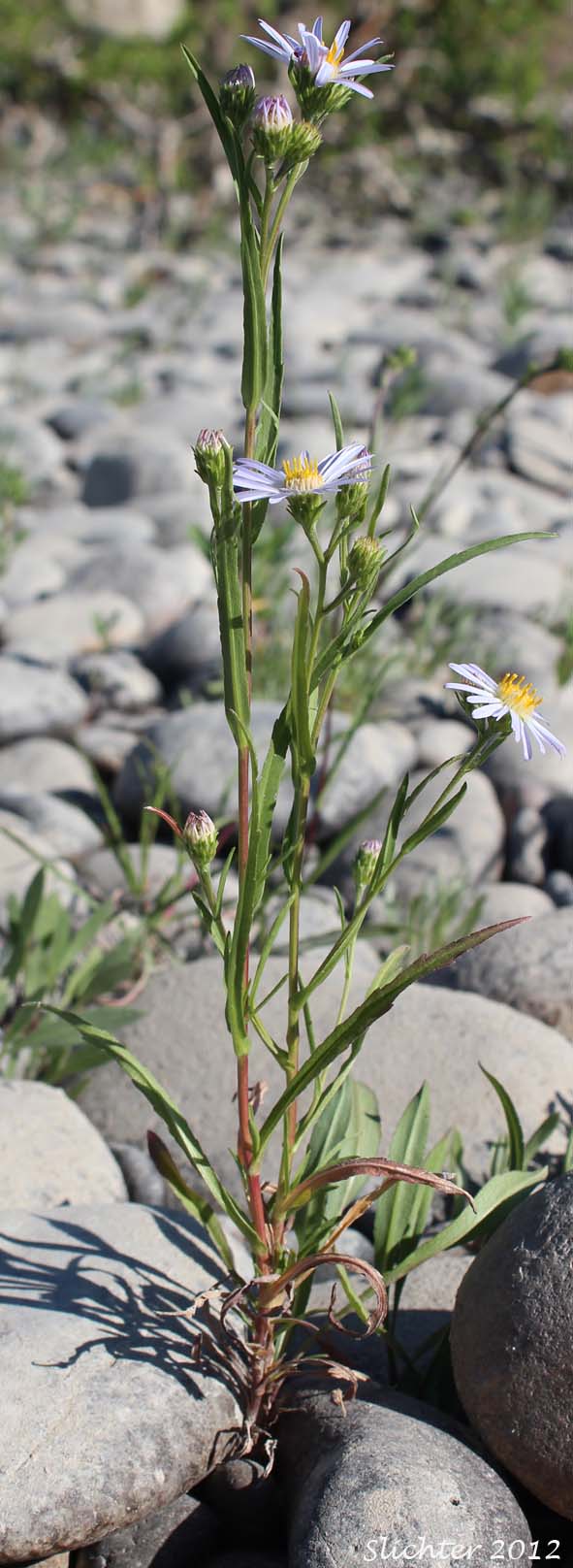
Douglas' aster as seen along the Columbia River shoreline on a low island in the McNary National Wildlife Refuge north of Richland, Washington............October 2, 2012. The narrow leaves are reminiscent of western mountain aster (Symphyotrichum spathulatum) which can also be found in the same habitat, but that latter species lacks the white margins at the base of the involucral bracts and it does not have teeth on its narrow leaves..
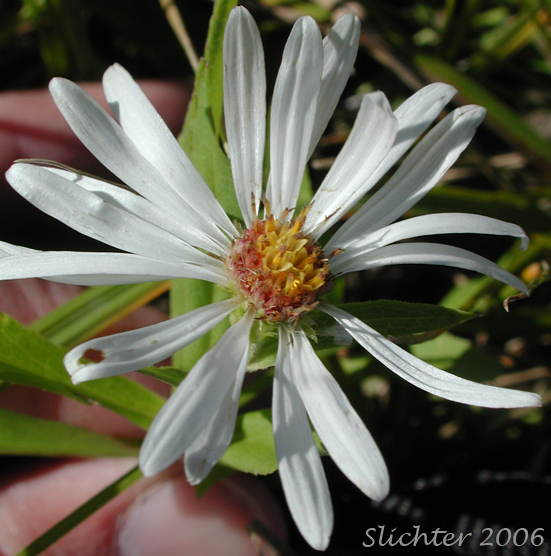
The flower head of Douglas' aster from Dalton Pt., Columbia River Gorge........October 12, 2006.
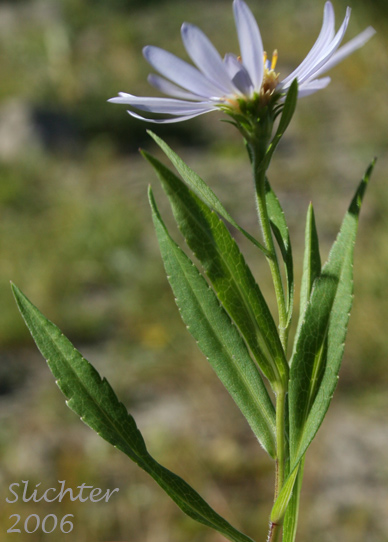
The upper stem with alternate, toothed leaves and flower head of Douglas' aster.........October 12, 2006.
Paul Slichter
 The photo at right is a close-up of the involucre of Douglas' aster from Dalton Point, Columbia River Gorge.........October 12, 2006. Note that the bracts are somewhat leafy.
The photo at right is a close-up of the involucre of Douglas' aster from Dalton Point, Columbia River Gorge.........October 12, 2006. Note that the bracts are somewhat leafy.